Table of Contents
- Spinanga Login – Easy Access to Your Account and Key Features
- Streamlined Steps for a Smooth Login Experience
- How to Navigate the Spinanga Login Portal
- Common Login Issues and Their Solutions
- Enhanced Security Measures for Your Spinanga Account
- Two-Factor Authentication: A Closer Look
Spinanga Login – Easy Access to Your Account and Key Features
In the ever-evolving digital landscape, efficient navigation to online platforms has become a priority for users. With the right tools and strategies, accessing personal portals can transform Spinanga App from a mundane task into a seamless experience. Efficient login procedures are not just about entering credentials; they involve understanding the intricacies of the system and maximizing usability.
One of the standout aspects of contemporary services is their multifaceted functionalities. Users benefit from a variety of options, including enhanced security measures, customizable settings, and intuitive interfaces. Recognizing these elements can significantly enhance the way individuals interact with their digital environments, leading to improved satisfaction and productivity.
For those looking to optimize their experiences, familiarity with essential provisions is crucial. From utilizing secure recovery options to navigating user-friendly dashboards, each aspect plays a role in ensuring a smooth transition. Engaging with tutorials and guided assistance can further solidify understanding and skill levels, paving the way for a more robust engagement with the platform.
Streamlined Steps for a Smooth Login Experience
To enhance the process of accessing your profile, consider these practical methods designed for efficiency. Adhering to these streamlined tactics will lead to quicker entry and reduced frustration.
First, ensure your device is optimized. Clear any cache or cookies from your browser to facilitate a clean connection. This can prevent conflicts and loading issues that may arise during authentication.
Next, verify your internet connectivity. A stable network is crucial for seamless interactions. Switch to a wired connection if available, or ensure your Wi-Fi signal is strong to minimize interruptions.
Utilizing a password manager can significantly simplify the input stage. Such tools securely store your login credentials, automatically entering them with just a click, freeing you from typing errors or forgotten passwords.
| 1. Optimize Device | Clear cache and cookies to ensure a fresh browsing session. |
| 2. Check Connection | Confirm that your internet is stable and strong. |
| 3. Use Password Manager | Utilize a manager to store and auto-fill credentials securely. |
| 4. Enable Two-Factor Authentication | Add an extra layer of security to prevent unauthorized access. |
Implementing two-factor authentication not only secures your login but also fosters peace of mind. By requiring a secondary method of verification, you further protect personal data from potential breaches.
Lastly, stay updated with any platform-related communications. Regularly check for notifications regarding updates or potential issues that may affect the access process.
How to Navigate the Spinanga Login Portal
To successfully enter the portal, pinpoint the official URL. Ensure it’s the correct site to safeguard your data. Upon reaching the login page, you will see fields designated for your username and password. Carefully input your credentials, making sure there are no typographical errors.
If you encounter difficulties during the validation process, utilize the ‘Forgot Password’ option. This feature will guide you through the recovery steps, including verifying your identity via email or SMS. Keep your recovery information updated to streamline this process.
Once logged in, familiarize yourself with the dashboard. It typically showcases various sections such as profile settings, transaction history, and assistance options. Spend a few moments navigating through these areas to understand all available options.
Customize your settings as needed. You can modify privacy preferences, notification settings, and linked devices to enhance your experience. Regularly checking updates in the help section is also advisable to stay informed about new functionalities or important announcements.
If you require assistance, locate the support feature, often found at the bottom of the page. This can direct you to common queries, user guides, or a customer service representative for further aid.
Finally, prioritize security. Log out after each session, especially on shared devices. Employ additional authentication methods if available, such as biometric verification or security questions, to protect your profile effectively.
Common Login Issues and Their Solutions
Accessing digital platforms can sometimes lead to frustrating hurdles. Below are frequent challenges users encounter and effective ways to resolve them.
Incorrect CredentialsOne of the most prevalent problems is entering the wrong username or password. To mitigate this, ensure the caps lock is off and verify that you are using the correct details. If there’s uncertainty, utilize the password recovery option to reset your credentials.
Account LockoutMultiple unsuccessful attempts can trigger an automatic lockout. If this occurs, wait for the designated timeout period or check for an email containing unlock instructions. If you don’t receive any communication, contact customer support for further assistance.
Browser Compatibility IssuesOccasionally, using outdated browsers may lead to functionality problems. To address this, ensure that your browser is up-to-date. Clearing your cache and cookies can also enhance performance and resolve unexpected errors.
Two-Factor Authentication ProblemsIf two-factor authentication is enabled and you’re not receiving codes, double-check your mobile settings. Verify that notifications are allowed and that the correct phone number is linked. Alternatively, consider using backup codes if available.
Network ConnectivityA reliable internet connection is crucial. If difficulties arise, test your network speed or switch to a different network if possible. Restarting your router can also help refresh your connection.
Server MaintenancePeriodic maintenance can lead to temporary unavailability. Check the official website or social media channels for notices about server status. If you suspect maintenance is the issue, try logging in after some time.
Device-Specific IssuesDifferent devices may present unique problems. If accessing the platform on a mobile device, consider using a different device or the desktop version to identify if the issue persists.
Security Software InterferenceOveractive firewalls or antivirus programs can block access. Temporarily disable them to determine if they are causing the problem. If so, adjust the settings to allow access to the platform.
By understanding these common hurdles and applying the suggested remedies, users can navigate potential obstacles with greater ease and efficiency.
Enhanced Security Measures for Your Spinanga Account
Protecting personal information is paramount in the digital age. One effective strategy includes enabling two-factor authentication (2FA). This adds an additional layer of verification beyond the usual password requirement, typically utilizing a mobile device for code generation.
Regularly updating passwords is crucial. Employ complex, unique combinations that include uppercase letters, lowercase letters, numbers, and special characters. Aim for a minimum of 12 characters to increase security resilience against potential breaches.
Utilize password managers to securely store and generate robust passwords. These tools not only automate the login process but also enhance overall security by avoiding repetitive password usage across different platforms.
Monitor account activity regularly. Look for any unusual transactions or logins, particularly from unfamiliar locations or devices. Immediately report any suspicious activity to the support team.
Implement session timeout settings whenever possible. This feature automatically logs the user out after a period of inactivity, reducing the risk of unauthorized access, especially on shared or public computers.
Be aware of phishing attempts that can compromise sensitive information. Always verify email sources and avoid clicking on links or attachments from unknown senders. Familiarize yourself with signs of phishing scams to better detect these threats.
Educate yourself about potential vulnerabilities within your software environment. Regularly updating applications and security patches prevents exploitation by cybercriminals targeting outdated systems.
Network security should not be overlooked. Use a virtual private network (VPN) while accessing sensitive data over public Wi-Fi to ensure encrypted communication, safeguarding against eavesdropping.
Utilize security questions that are difficult for others to guess. Choose queries that are not easily found through social media or other public sources, strengthening your defense against identity verification breaches.
Two-Factor Authentication: A Closer Look
Two-factor authentication (2FA) serves as an essential layer of protection, enhancing the security of online environments. This mechanism requires users to verify their identity through two distinct methods, significantly reducing the risk of unauthorized access.
Here are the two main components involved in 2FA:
- Something You Know: Typically this involves a password or a PIN. Users must create strong, unique combinations to resist brute-force attacks.
- Something You Have: This can be a mobile device, security token, or an authenticator app. It generates time-sensitive codes or requires confirmation when an attempt is made to login.
Benefits of implementing this security feature include:
- Enhanced Security: Even if a password is compromised, the second factor makes unauthorized entry highly unlikely.
- Reduction of Phishing Threats: Many phishing attacks fail to obtain both verification types, thereby protecting user profiles.
- User Awareness: The process encourages individuals to be more vigilant regarding their credentials and online habits.
For efficient utilization of two-factor authentication, consider the following recommendations:
- Choose Strong Methods: Opt for authentication apps over SMS for receiving codes, as they are less susceptible to interception.
- Regularly Update Information: Ensure recovery methods are up-to-date to avoid getting locked out of services.
- Educate on Recognizing Threats: Be aware of phishing attempts that could bypass 2FA by tricking users into providing both verification types.
Incorporating this dual verification method into daily online practices is a crucial step in bolstering digital defenses. Adopting two-factor authentication demonstrates a commitment to safeguarding sensitive information and maintaining control over personal data. Make this standard practice to enhance overall security posture in a constantly evolving digital landscape.




